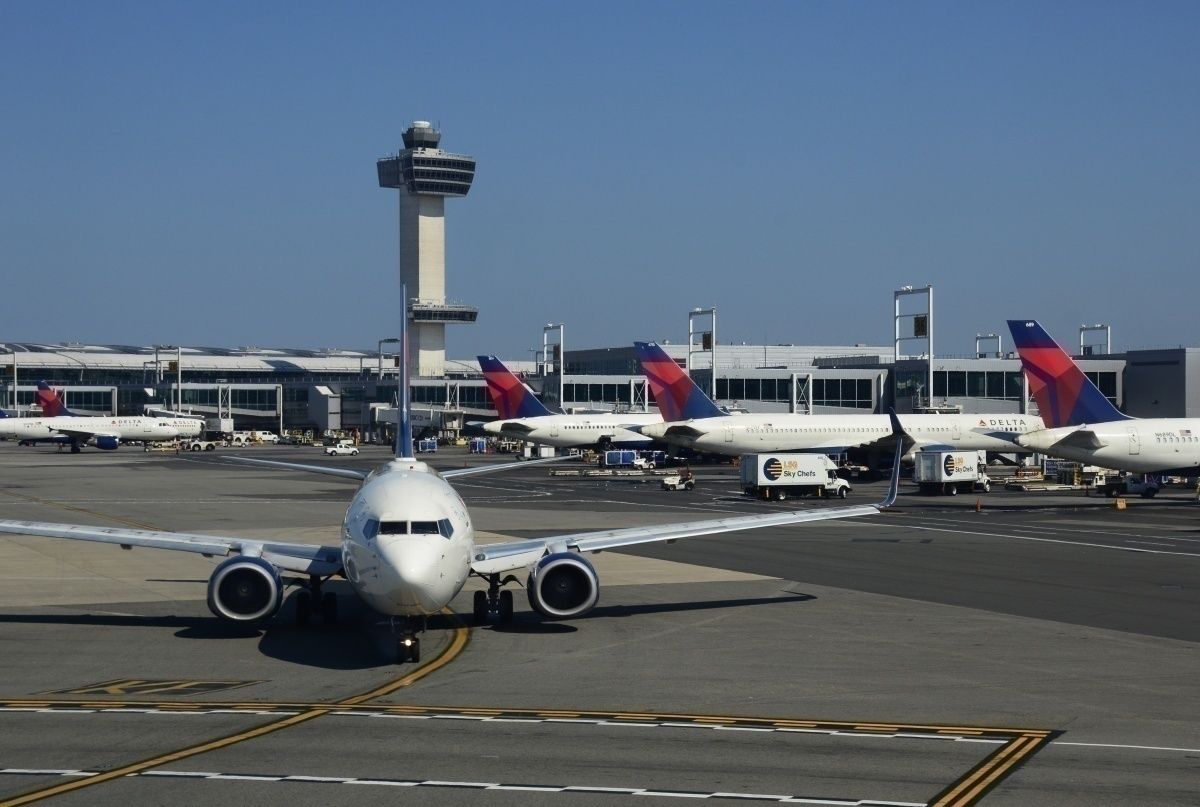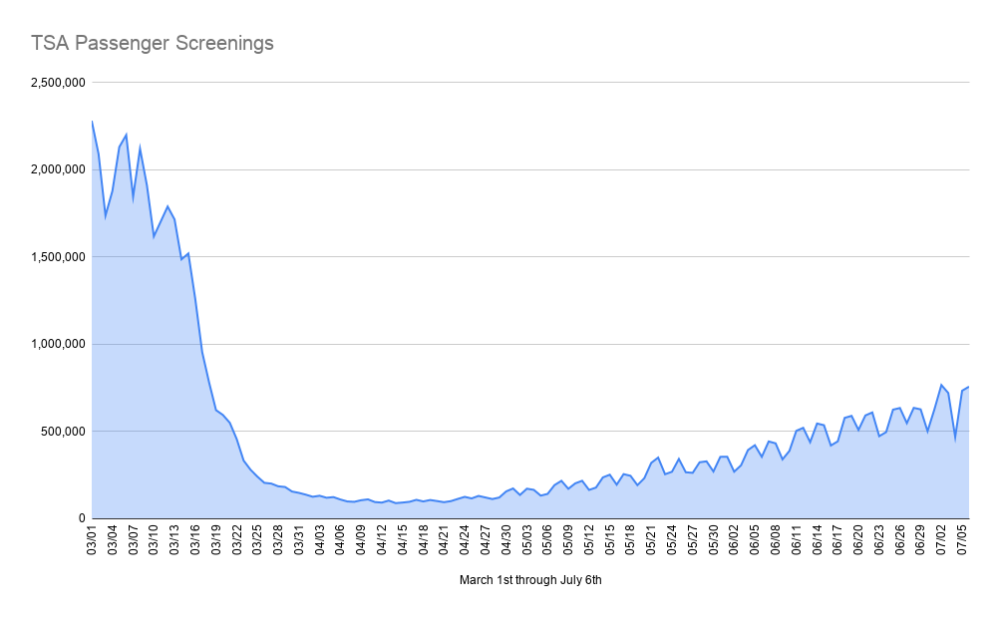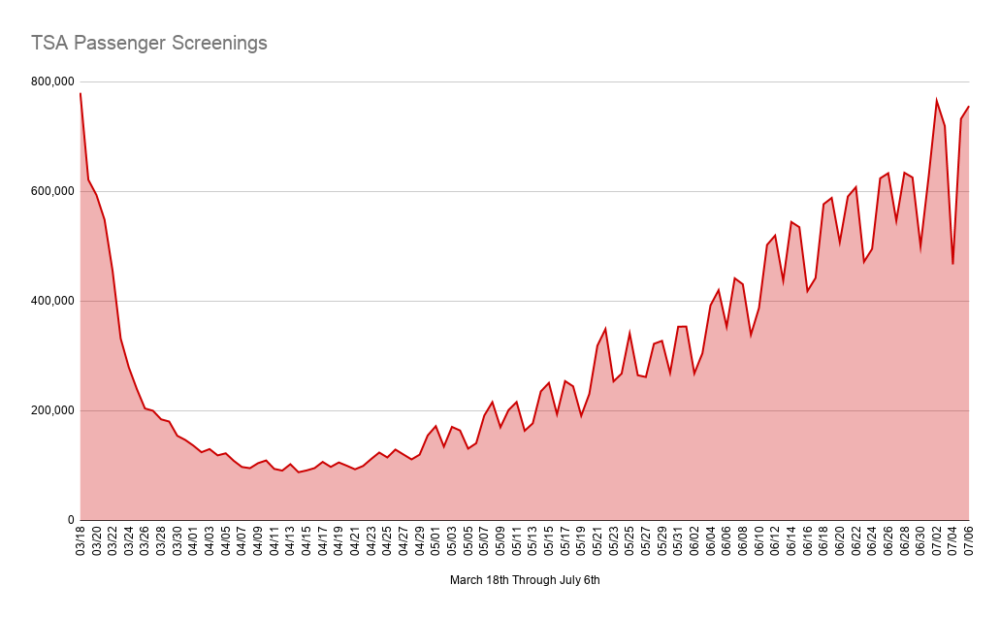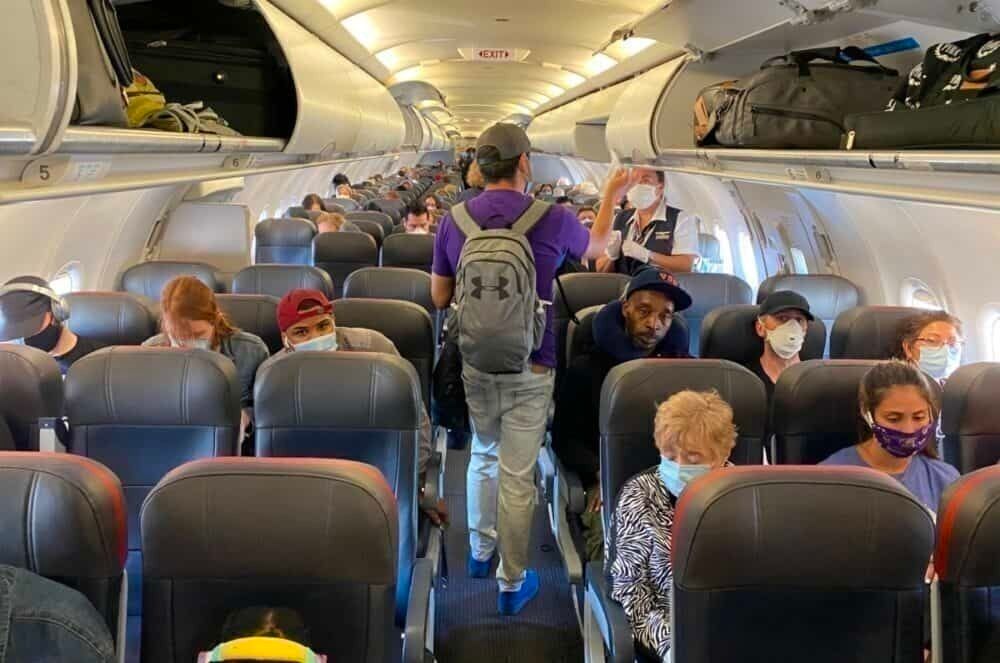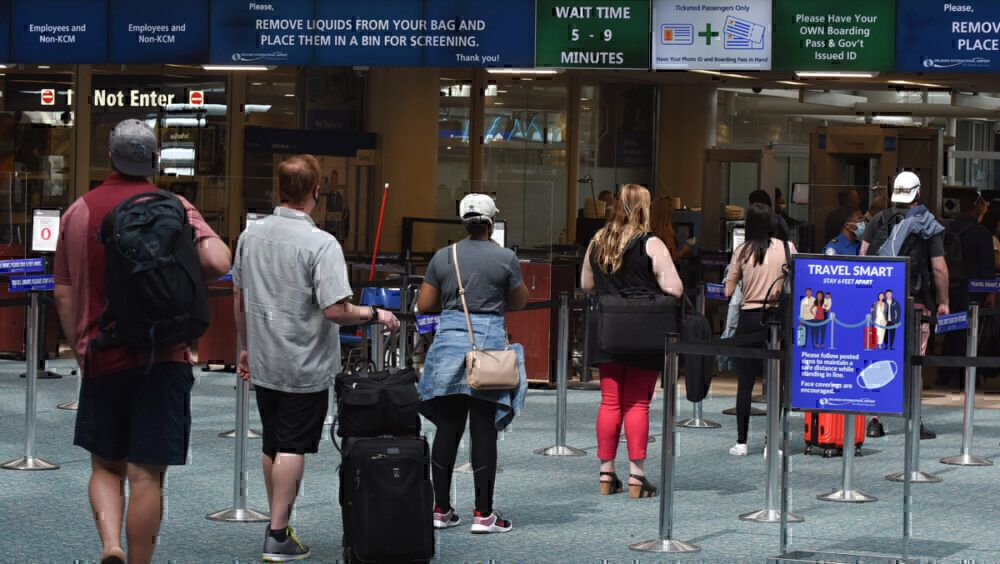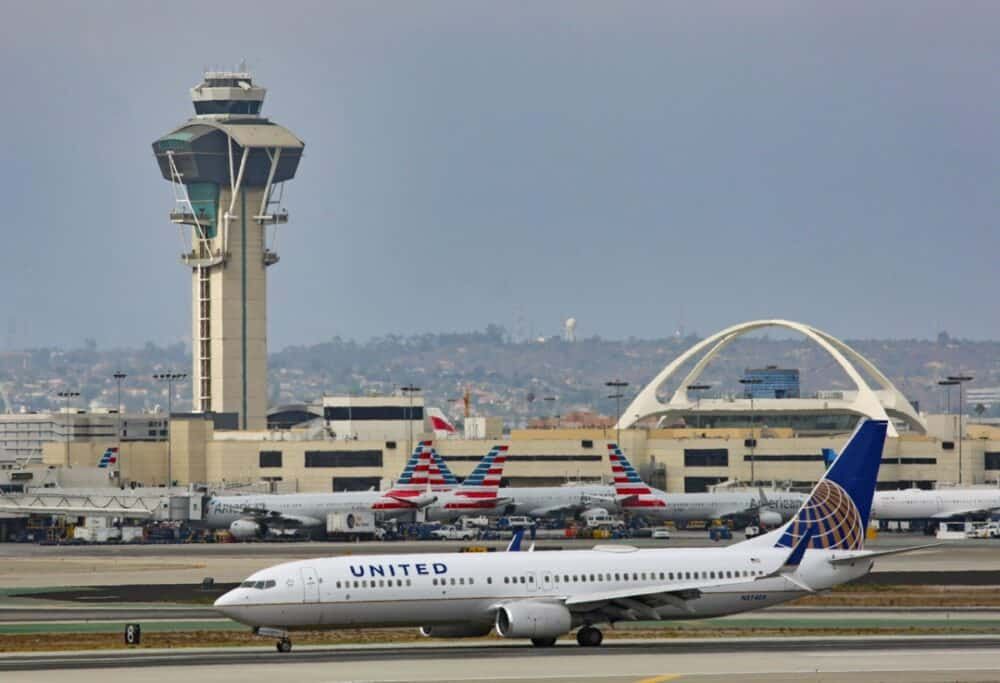The July 4th holiday was a good one for US airlines. There was strong passenger demand and the Transportation Security Administration (TSA) notched four days where it screened over 700,000 travelers. Ultimately, it continues to show strong demand for leisure travel.
July 4th traveler numbers
The lead-up to the July 4th holiday saw plenty of people passing through security screening:
- July 2nd: 764,761 passengers
- July 3rd: 718,988 passengers
- July 4th: 466,669 passengers
- July 5th: 732,123 passengers
- July 6th: 755,555 passengers
The total over these five days was 3,438,096 passengers. The last time the TSA recorded over 700,000 passenger screenings was on March 18th, when 779,631 people traveled.
Within a month from March 18th, passenger numbers dipped to their lowest numbers in recent memory. Since then, it's been a slow and steady increase. The domestic market started to show signs of life by the time Memorial Day hit. And, since then, week-after-week week, more and more passengers have gotten onboard planes.
One of the first real tests of passenger strength was going to be the July 4th holiday. In June, airlines had started to see travel demand begin to rebound and announced an increase in flights beginning in July. Much of that growth was domestic.
Inching closer to one million daily passengers
One million daily passengers would be under half what the TSA traditionally sees in the summer. There is still is some way to go. It is unclear if the July 4th holiday was either a continuation of the trend airlines have seen or if numbers are plateauing.
One factor that is working against airlines is the recent spike in coronavirus cases in popular vacation destinations in the United States, including Florida, Texas, and California. That trend, also, is, unfortunately, starting to expand in the US. Already, Delta has indicated it may decide to cut some flights in response to a rise in the number of cases.
A tough road ahead for airlines
One of the problems for airlines is if summer travel does not continue to rebound. If come August, the TSA is still only seeing 700,000 passengers a day amid surging cases and the continued closure of some tourist destinations, then it provides some scary omens for the fall.
Traditionally, demand remains weaker for airlines in the fall and winter months. If airlines are unable to earn their revenue in the summer, then it will be a harsh winter. Airlines traditionally rely on the summer months to give some financial cushion for the winter.
Already, airlines have started to find ways to raise additional cash. US airlines have agreed to loans with the US Treasury, some have pledged aircraft or slots to raise some money, and others have pledged their loyalty programs (or revenues from the program) as collateral for loans. This will help bolster balance sheets and ensure that airlines can survive– or so airlines hope. There is still a lot of uncharted territories to cross.
Did you travel over the July 4th holiday? Are you planning on flying in the upcoming weeks? Let us know in the comments!

